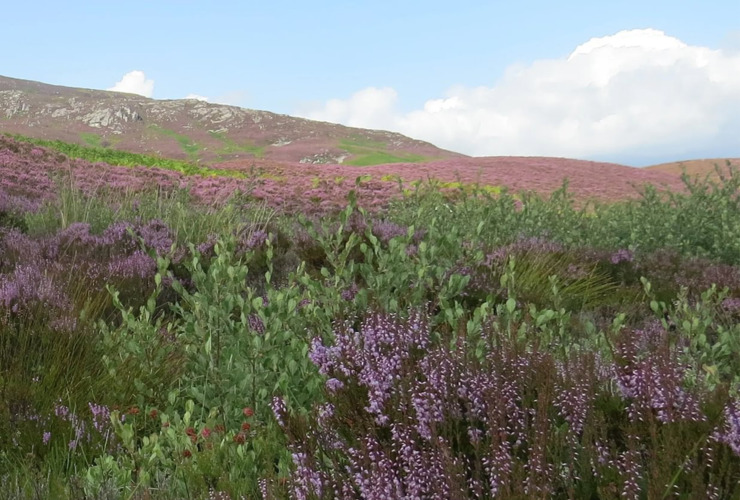Trust supports game-changing call for new Nature Network
Scottish environmental coalition LINK presents a bold range of policies with a key role for wild land

Scottish Environment LINK, the environmental coalition representing 39 groups and charities including the John Muir Trust in Scotland, has presented a radical response to the Government’s call for ideas ahead of the new National Planning Framework (NPF4) in autumn 2020.
Within its response, LINK makes a strong case for the establishment of a national Nature Network in order to better manage land use for "the long term public interest", namely working towards a healthier planet and a society that lives within its means.
The coalition is calling for a coordinated approach to planning – one which identifies opportunities for nature-based solutions to climate change such as tree planting, peatland restoration, flood risk and coastal management. Scotland's Nature Network would be a mechanism for the development of "bigger, better and more joined up sites for nature" - the type of landscape scale corridors that wildlife needs to move and adapt to climate change in the coming decades. Its case is that a strategic, national approach can benefit both people and nature equally in an uncertain future.
The group is also advocating for a better integration of Scotland’s Land Use Strategy within the nation’s planning regulations. This is a technical but essential step towards "recognising the role of land in underpinning Scotland’s social and economic prosperity, supporting climate mitigation and adaptation and promoting sustainable development."
The plans are holistic and apply to both urban and more rural settings, as well as ensuring that wild land has an ongoing role to play in securing a more sustainable future for people and planet. The coalition recognises that SNH's Wild Land Areas "provide a spatial framework that identifies those parts of our landscape that can make a major contribution to addressing climate change, for example, through nature-based solutions such as woodland and peatland restoration," with these landscapes also supporting smaller local communities as well as the food, health, well-being and culture economies of wider society.
A national Nature Network and an ecosystems approach to planning may be useful ways to secure a future for Scotland’s wild land, but the relationship is very much mutual - where these areas are environmentally degraded, their restoration can aid progress towards a more just and resilient nation.
LINK also suggests a wide range of other measures to meet the climate and nature emergencies, including: the recognition and protection of Scotland’s marine and coastal landscapes; enhanced protection of ancient woodland; ceasing peat extraction for gardening; a ban on new large-scale biomass and fossil fuel plants; a national housing audit; a renewed emphasis for National Parks on their first statutory objective; and better green belt protection.
The importance of access to local green space as well as nationally significant landscapes has been highlighted by the coronavirus pandemic, and LINK suggests that the goals for the future should remain those "which seek to realise a low carbon society and thriving nature and communities".
The Trust believes this is an exciting and progressive vision that lays out how the planning system could work in favour of a greener, more equitable society, and was delighted to contribute towards it.
Image shows eared willow, Eilean na h-Àirde, by Lester Standen

